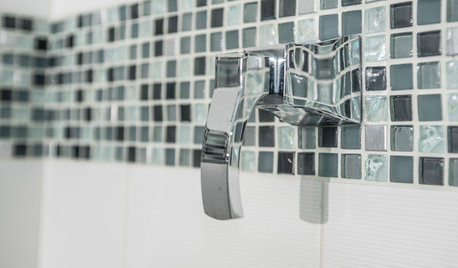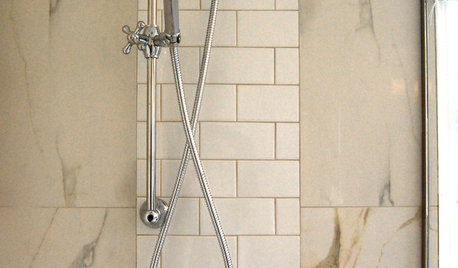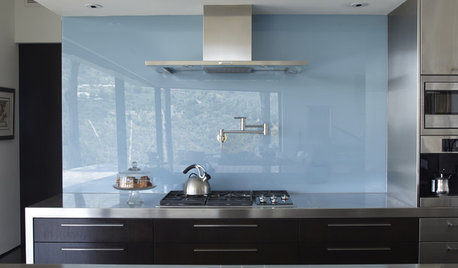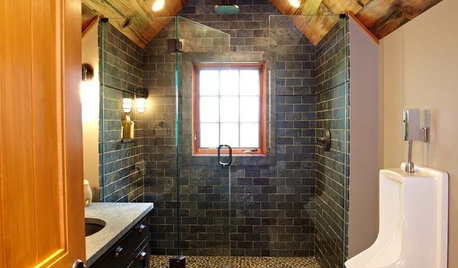sanded grout? unsanded?
tuesday22
15 years ago
Related Stories

BATHROOM DESIGNConvert Your Tub Space Into a Shower — the Tiling and Grouting Phase
Step 3 in swapping your tub for a sleek new shower: Pick the right tile and test it out, then choose your grout color and type
Full Story
TILE3 Key Steps for Grouting That Looks Its Best
Get your grout right to keep your tile beautiful and for an installation that will last
Full Story
TILEEpoxy vs. Cement Grout — What's the Difference?
Grout is grout, right? Nope. Cement and epoxy versions have different appearances, durability and rules of installation
Full Story
REMODELING GUIDES9 Ways Grout–Yes, Grout–Can Add to Your Design
Choose From a Palette of Grout Colors for a Warm, Unified Look
Full Story
HOUSEKEEPINGHow to Clean Grout — Stains and All
If your grout is grossing you out, this deep-cleaning method will help it look new again
Full Story
BATHROOM TILEQuick Fix: Repair Cracked Bathroom Grout
Banish an eyesore and safeguard your bathroom from water damage in 30 minutes or less with this DIY repair
Full Story
KITCHEN DESIGNThe Future of Backsplashes
Grout is out. Continuous sheets of glass, stone, metal and porcelain are saving cleaning time and offering more looks than ever
Full Story
REMODELING GUIDESContractor Tips: How to Install Tile
Before you pick up a single tile, pull from these tips for expert results
Full Story
KITCHEN BACKSPLASHESHow to Install a Tile Backsplash
If you've got a steady hand, a few easy-to-find supplies and patience, you can install a tile backsplash in a kitchen or bathroom
Full Story
BATHROOM DESIGNWood in the Bathroom? Absolutely!
Wet places and wood can be a match made in design heaven — see great examples and get tips for sealing and installing bathroom wood here
Full Story






bill_vincent
tuesday22Original Author
Related Professionals
College Park Kitchen & Bathroom Designers · South Sioux City Kitchen & Bathroom Designers · Placerville Kitchen & Bathroom Remodelers · Republic Kitchen & Bathroom Remodelers · Richmond Glass & Shower Door Dealers · Albany Glass & Shower Door Dealers · Atlanta Glass & Shower Door Dealers · Houston Glass & Shower Door Dealers · Newport Beach Glass & Shower Door Dealers · Windsor Glass & Shower Door Dealers · Skokie Glass & Shower Door Dealers · Chino Glass & Shower Door Dealers · Citrus Heights Cabinets & Cabinetry · University Park Cabinets & Cabinetry · Rockford Window Treatmentsbill_vincent
tuesday22Original Author
bill_vincent
tuesday22Original Author
bill_vincent
tuesday22Original Author
tuesday22Original Author
bill_vincent
tuesday22Original Author
bill_vincent
tuesday22Original Author
bill_vincent
tuesday22Original Author
raehelen
tuesday22Original Author
bill_vincent
tuesday22Original Author
bill_vincent
tuesday22Original Author
bill_vincent
tuesday22Original Author
bill_vincent